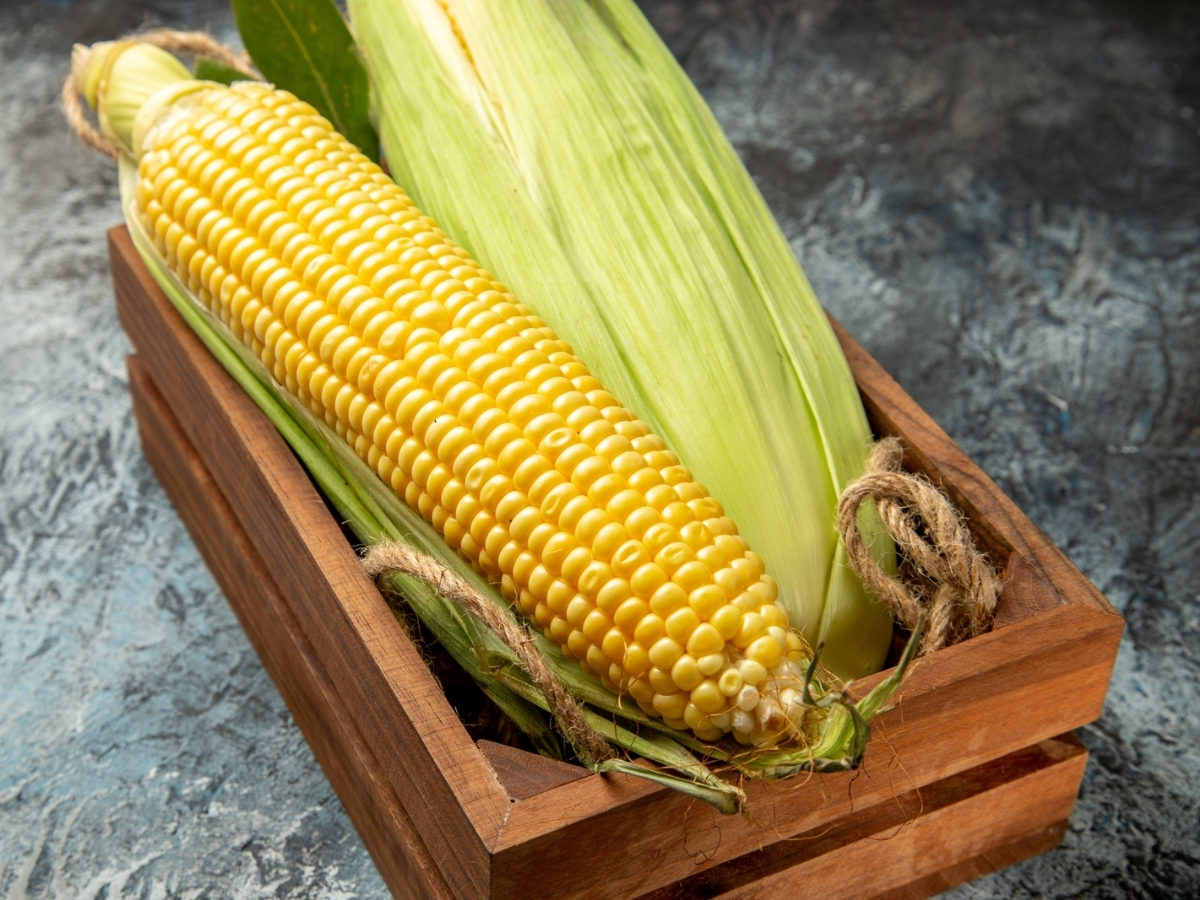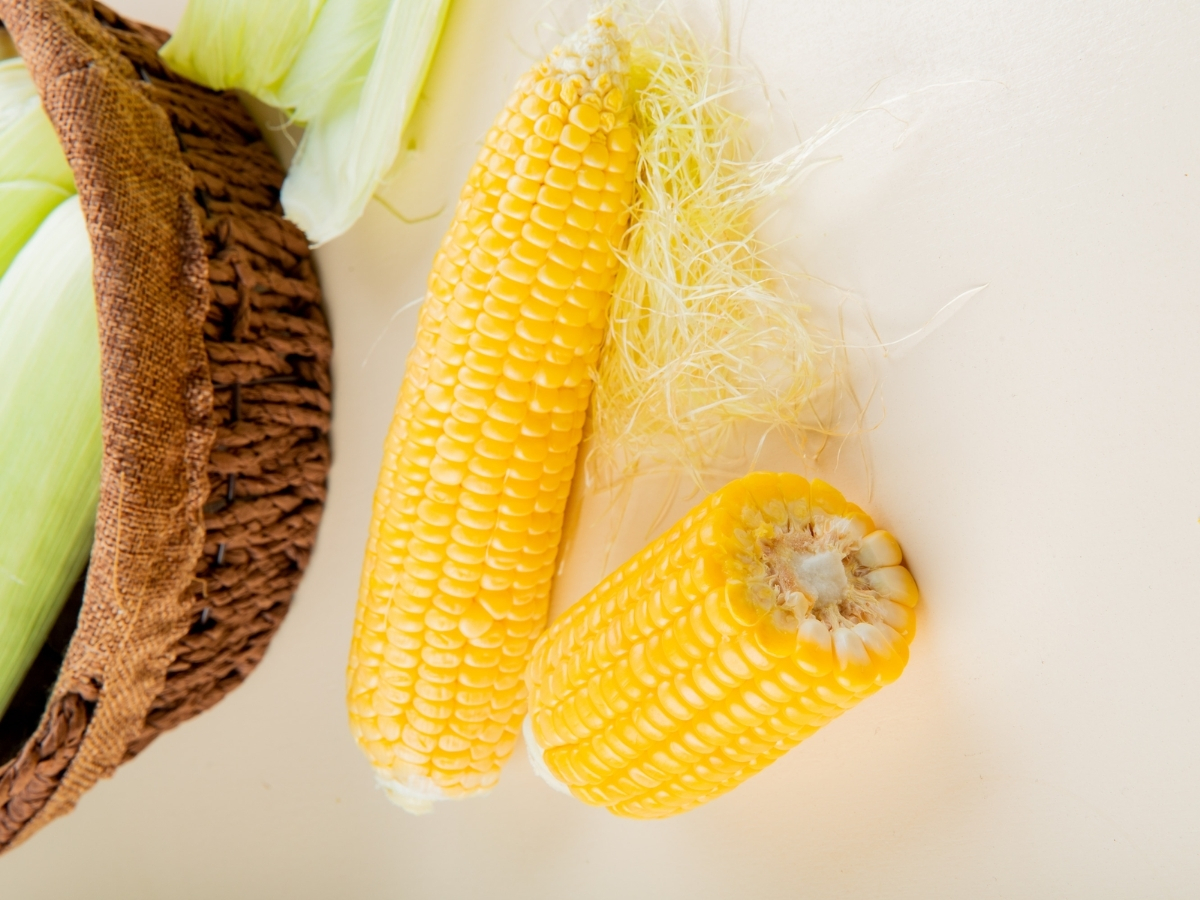At Natural Health, we know many people managing blood sugar often ask, is sweet corn good for diabetes? The short answer: YES, with the right portion. Corn contains fiber, vitamins, and antioxidants that support overall health. In this guide, we break down how corn fits into a diabetes-friendly diet and how to enjoy it without the sugar spikes.
The nutrition value of corn
Corn is rich in carbohydrates and provides a good amount of fiber, essential vitamins, and minerals. However, it contains relatively small amounts of protein and fat. A one-cup serving (145 grams) of sweet yellow corn offers:[1]
| Nutrient | Amount |
| Calories | 177 |
| Carbs | 41 g |
| Protein | 5.4 g |
| Fiber | 4.6 g |
| Fat | 2.1 g |
| Vitamin C | 17% |
The majority of carbohydrates in corn are from starch, which may lead to a rapid increase in blood sugar based on portion size. That said, corn also contains a good amount of fiber, which can help moderate blood sugar spikes.[2],[3]
Corn offers about 13% of the recommended daily intake of thiamin (0.16 mg) and contains a variety of important nutrients such as potassium, iron, zinc, magnesium, phosphorus, and selenium. It’s also a beneficial source of folate, vitamins C and E, as well as beta-carotene, which the body converts into vitamin A.[1]

The health benefits of corn
Corn provides more than just essential vitamins and minerals, it also offers several health benefits.[4] A common question is “can diabetics eat corn?” The answer is yes, when consumed in moderation and balanced with other nutrients. Below are some of the key health benefits that corn can provide, including its role in supporting overall wellness and disease prevention.
May Lower the Risk of Type 2 Diabetes
Including a variety of colorful plant foods, such as purple corn, in your diet can be a smart way to support diabetes prevention. If you have diabetes, remember to keep an eye on the carbohydrate content.[5]
May Help Prevent Colon Cancer
Corn is a good source of dietary fiber, which supports the growth of beneficial gut bacteria. These bacteria produce short-chain fatty acids that are thought to play a role in protecting against colon cancer.[6] Eating fresh corn, popcorn, or other whole grain corn products helps maximize your fiber intake.
Supports Weight Management
High-fiber, high-protein snacks, like air-popped popcorn, can help you feel full longer.[7] One cup of plain, air-popped popcorn contains just 31 calories along with 1 gram of protein and 1 gram of fiber.
Because snacks often account for a large part of daily calorie intake, choosing whole-grain options like popcorn can contribute positively to weight control.
Promotes Eye Health
Corn contains lutein and zeaxanthin, two forms of vitamin A that are especially beneficial for vision. These compounds are concentrated in the retina and are known to help reduce the risk of age-related macular degeneration.[8]
Studies suggest that combining lutein and zeaxanthin with nutrients like vitamins C and E, copper, and zinc, all found in corn, can be effective in protecting eye health as we age.
Is corn good for diabetes?
Yes, corn can be part of a diabetes-friendly diet when eaten in moderation. It provides fiber, vitamins, and antioxidants, but also contains a moderate amount of carbohydrates that may affect blood sugar. If you’re asking is corn good for diabetes, the key is portion control and pairing it with protein or healthy fats to help manage its impact on blood glucose levels.
Is sweet corn good for diabetes?

Yes, sweet corn can be included in a type 2 diabetes meal plan if eaten in moderation. While it contains natural sugars and starch that may affect blood sugar, it also provides fiber, vitamins, and antioxidants.[9] To help manage blood sugar levels, those with type 2 diabetes should watch portion sizes and pair sweet corn with protein or healthy fats. So, the answer to “is sweet corn good for type 2 diabetes” is yes, with mindful eating.
Tips for Enjoying Sweet Corn
Sweet corn is naturally sweet, delicious, and full of nutrients, but if you’re managing blood sugar, you might wonder how it fits into your diet. The good news is, with the right approach, sweet corn for diabetes can absolutely be part of a healthy, balanced meal plan. Here are some practical tips to enjoy it without the sugar spikes.
- Watch Your Portions: Stick to about ½ cup to 1 cup of sweet corn per serving to help control carb intake.[10]
- Pair with Protein or Healthy Fats: Combine corn with foods like grilled chicken, eggs, avocado, or nuts to slow blood sugar spikes.[11]
- Choose Fresh or Frozen Over Canned: Fresh or frozen sweet corn has fewer added sugars and sodium than canned versions.[12]
- Avoid Adding Butter and Sugar: Instead, season with herbs, lime juice, or a sprinkle of chili powder for flavor without extra calories.[13]
How Much Corn Can People With Diabetes Eat?
People with diabetes can usually enjoy about ½ cup to 1 cup of corn per serving, depending on their individual carbohydrate goals.[14] A ½ cup of cooked corn contains roughly 15 grams of carbs, which equals one carbohydrate serving.[15] So, if you’re wondering is corn good for diabetes, the answer is yes, when eaten in controlled portions and balanced within your daily carb intake.
To avoid blood sugar spikes, it’s important to:
- Stick to small portions
- Balance corn with protein or healthy fats
- Monitor your blood sugar response
“Always adjust based on your health needs and consult your healthcare provider or dietitian for personalized guidance.”
Frequently asked questions
Can people with diabetes include boiled corn in their diet?
Yes, people with diabetes can include boiled corn in their diet as long as it’s eaten in moderation. Boiled corn provides fiber, vitamins, and antioxidants, but it also contains carbohydrates that can raise blood sugar.
Is corn better than rice for diabetes?
Yes, is corn better than rice for diabetes is a common question, and the answer often leans toward corn. Compared to white rice, corn generally has more fiber and a lower glycemic index, which helps reduce blood sugar spikes. This makes corn a better choice for people with diabetes when eaten in moderation.
Are corn tortillas better than flour tortillas for diabetes?
Yes, corn tortillas are generally better than flour tortillas for diabetes. They have fewer carbs, more fiber, and a lower glycemic index, which helps reduce blood sugar spikes. Choosing whole-grain corn tortillas in moderate portions can be a smarter option for blood sugar control.
So, is corn good for diabetes? Yes, if consumed in controlled portions and balanced with protein or healthy fats. This article from Natural Health focuses on practical, research-backed insights for managing blood sugar without excluding familiar foods. With mindful choices, corn can absolutely be part of a diabetes-friendly diet.


Last medically reviewed on
How we reviewed this article:
References
[1] Corn, sweet, yellow, raw; U.S. Department of Agriculture Agricultural Research Service; 2019
[2] Macronutrients in Corn and Human Nutrition; Yongfeng Ai, Jay-lin Jane; 2016
[3] Maize—A potential source of human nutrition and health: A review; Tajamul Rouf Shah, Tajamul Rouf Shah, Pradyuman Kumar, Fatih Yildiz; 2015
[4] Corn phytochemicals and their health benefits; Siyuan Sheng, Tong Li, RuiHai Liu; 2018
[5] Anthocyanins from purple corn activate free fatty acid-receptor 1 and glucokinase enhancing in vitro insulin secretion and hepatic glucose uptake; Diego A. Luna-Vital,Elvira Gonzalez de Mejia; 2018
[6] Harvesting the Health Benefits from Corn; Health & Nutition Letter; 2018
[7] Snack Food, Satiety, and Weight; Valentine Yanchou Njike, Teresa M Smith, Omree Shuval, Kerem Shuval, Ingrid Edshteyn, Vahid Kalantari, Amy L Yaroch; 2016
[8] Vitamin A and Carotenoids; National Institutes of Health; 2025
[9] Sweet Corn – Nutrition Facts; Dominque Simon; 2025
[10] Simplified Diet Manual; Andrea K. Maher
[11] Eat What You Love Diabetic Cookbook: Comforting, Balanced Meals; Lori Zanini, RD, CDE
[12] Effects of Blanching, Freezing and Canning on the Carbohydrates in Sweet Corn; Monica M. Whent,Holly D. Childs,Shawn Ehlers Cheang,Jiani Jiang,Devanand L. Luthria,Michael R. Bukowski,Carlito B. Lebrilla,Liangli Yu,Pamela R. Pehrsson andXianli Wu ; 2023
[13] Season: Big Flavors, Beautiful Food; Nik Sharma
[14] Nutritional guidelines for diabetics; Abdul Qaiyum; 2016
[15] Carbohydrate counting; diabetes uastralia; 2016
Share this article
Read this next
Is water lemon good for diabetes? What should you know
Lemon water is good for diabetes, not just because it’s refreshing, but because it offers real support for blood sugar control. With zero added sugar, rich in vitamin C and antioxidants, it may help improve hydration, aid digestion, and reduce post-meal blood sugar spikes. At Natural Health, we break down how to make lemon water…
Apple cider vinegar for diabetes: The research says and tips to use
At Natural Health, we explore the growing interest in apple cider vinegar for diabetes. Studies suggest it may help improve insulin sensitivity and lower blood sugar levels after meals. This article explains how apple cider vinegar works, how to use it safely, and what people with diabetes need to know before adding it to their…
11+Fruits low in sugar for diabetes | List of Healthy Fruits
At Natural Health, we highlight fruits low in sugar for diabetes that support steady glucose levels while offering antioxidants, fiber, and essential nutrients. This guide features 11+ dietitian-approved fruits that are safe for people with diabetes! 11+Fruits low in sugar for diabetes | Recommended by Dietitians Not all fruits are diabetes-friendly, but the good news…